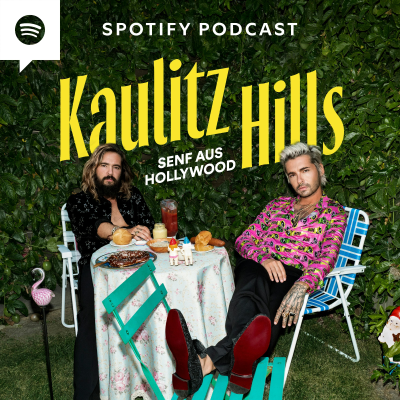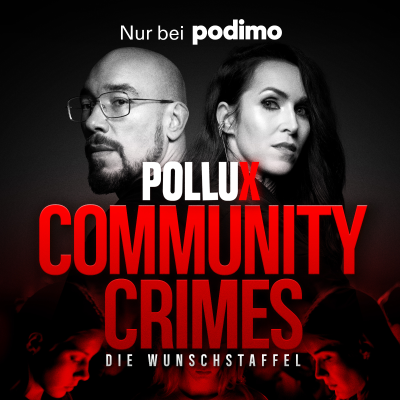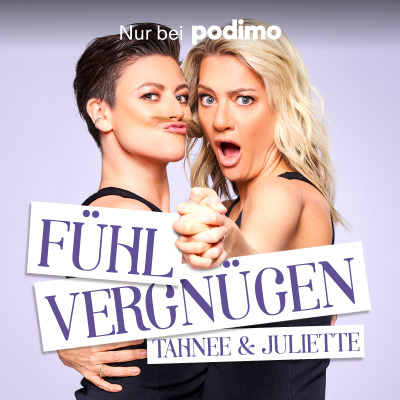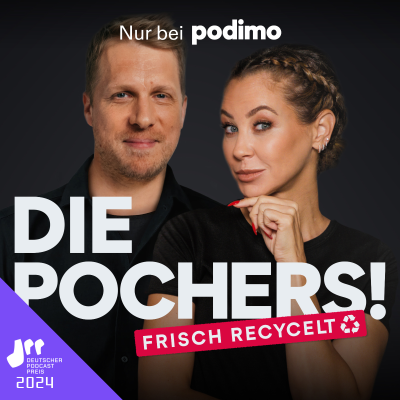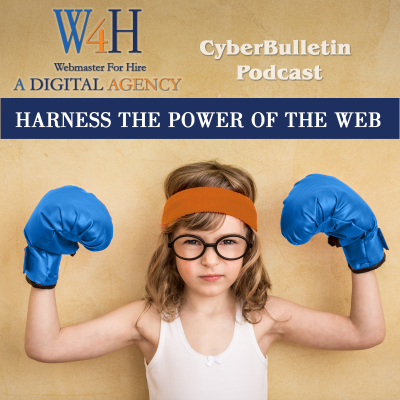
W4H CyberBulletin For Internet Marketing
Podcast von Elizabeth Varian
Nimm diesen Podcast mit
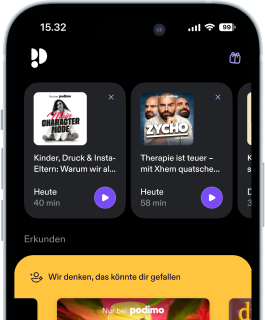
Mehr als 1 Million Hörer*innen
Du wirst Podimo lieben und damit bist du nicht allein
Mit 4,7 Sternen im App Store bewertet
Alle Folgen
5 FolgenThis podcast discusses about the importance of having quality topics for your business website. TRANSCRIPT OF PODCAST: Welcome to Webmaster For Hire’s CyberBulletin podcast. Get the power to increase your business’s web impact. Elizabeth Varian:Hey, everybody. Elizabeth Varian here, Webmaster For Hire CEO and president. We’re coming with you with the podcast of CyberBulletin, and today’s topic is going to be content marketing and creating good topics. It’s a very important conversation to have that a lot of business owners don’t realize, so pay attention. It’s not going to be just me today. We’ve got Carrie Currie on the line. Hey, Carrie. Carrie Currie: Hey, everybody. Elizabeth Varian: So Carrie, before she was my executive assistant, her main role was creating topics for our clients. so I thought she was the best person to bring her knowledge and expertise to you guys. Why don’t we just jump in and get started, Carrie? I started from the beginning saying it’s a very important topic and a lot of business owners don’t know this, so why don’t you explain a little bit? Why is it a concern to have the quality topics? Carrie Currie: There are 3 main reasons for it. The first is that good topics will bring your target demographic–the clients that you are catering to–to your site. That’s the first item, and then it also sets you apart as an authority in your field, which then generates trust. Elizabeth Varian: Yes, expert status. Absolutely. Carrie Currie: Right? Then, those that trust you are more likely to purchase from you and are also more likely to be loyal customers that will recommend you on social media and spread the word. Elizabeth Varian: Yeah. Another thing to consider, which is why we have someone focused on topics, is Hummingbird changed the game with SEO years ago, and quality content is a definite must, so you’re right. Carrie Currie: Right. Elizabeth Varian: You need to have that loyalty following, and you really need to make sure that you are expert, so definitely good point. Who needs to worry about creating these good topics? Carrie Currie: Well, it would be small businesses and startups that don’t really have the budget to hire experts like you and me. If they’re doing it on their own, they have to pay attention to what they’re doing, especially if they want to compete with others. Then, medium and large businesses that do hire internet marketing firms and/or do it in-house. They really do have to be on top of what’s being done on their behalf, and then… Elizabeth Varian: Absolutely. Carrie Currie: Right? Of course, internet marketing firms like Webmaster For Hire and content managers would want to pay attention to the quality that’s being done. Elizabeth Varian: Absolutely, spot on. Knowing that right algorithm for tweaking it, so the topics are on point and searchable. Carrie Currie: Right, and that changes all the time. Elizabeth Varian: Yes. Definitely, and the internet is changing every day. Just a little plug of hiring someone like Webmaster For Hire, we know those algorithms. We know where the tools are and the tricks of the trade, so let’s talk about that. How do good topics … How are they going to set apart the authority from other competitors who are posting content, but they’re just pushing out whatever? Carrie Currie: Right. It used to be that pretty much all you wanted to do was maintain constant activity on your website, and so you would reach out. They refer to them as “content mills,” where they just type up whatever and send it off, and it usually was pretty superficial and pathetic when I began. I would read these things going, “Why? Why would somebody write this? There’s no point.” Elizabeth Varian: They’re just pushing out words. Carrie Currie: Yeah, right? If you are creating original content and you’re using your own expertise and your own experience, and then also, if it’s accurate, that’s a big deal. Elizabeth Varian: Absolutely. You can’t be an expert with fake information. Carrie Currie: Exactly, and if it’s well-thought out and well-presented it does 2 things. It translates into professionalism, and it also makes you personable because people, they don’t trust businesses. They trust people. Elizabeth Varian: Correct. Yes. People buy from people. Carrie Currie: Yeah. Elizabeth Varian: You’re so spot on with that. Good point. So how do the good topics … Making sure it’s quality, how does it project that trust that prompts someone to buy? Carrie Currie: Okay, so some background about me. I was a psych major in college, so … Elizabeth Varian: Ooh, I started out as one. Didn’t last long. Carrie Currie: I love figuring out how people tick, and I love discovering new ways of thinking and getting to know people who are completely different from me, so that’s my own personality. When I was studying psychology and what I call the “psychology of trust,” I came across these three assumptions. As I was pondering this in terms of good content, it made sense to me that if a business abides by these three assumptions of trust in every interaction that they have with a potential customer, that customer will buy from them. The first assumption is, “If you need help, you can turn to someone you trust.” We learned that when we’re little, and we go to our mom. Elizabeth Varian: Yup. Carrie Currie: “I’m hungry. I need help,” or, “I skinned my knee.” We go to our mom. Elizabeth Varian: Yes. That’s the whole basis of the Officer Friendly Program. Carrie Currie: Oh, yeah? Elizabeth Varian: Mm-hmm (affirmative). Carrie Currie: Okay. Cool. None of this is original. It’s just stuff I’d put together. Then, the assumption number 2 is, “if you need support, your trusted person will be there and will be happy to support you.” That is so important for a business to take … to internalize, and then assumption number 3 is, “You’ll be comforted and relieved by that support.” Elizabeth Varian: Absolutely, or product. Yes. Carrie Currie: Exactly … Yeah. Whateveritis that the business offers. Elizabeth Varian: Yes. Carrie Currie: Yeah. Elizabeth Varian: The good topics, how are they providing that, those three? Carrie Currie: First off, you become a trusted resource because they can go to your site. They can rely on the information that you provide. They know it’s accurate, and they know that it will help them out with whatever it is that they are in need of. Elizabeth Varian: Absolutely. Carrie Currie: That’s why you have … Elizabeth Varian: You will then become the expert that becomes that trusted source? Carrie Currie: Exactly. Elizabeth Varian: Got you. Got you. Good points. Okay. We keep using the term “good topics.” What does that actually mean? What is a good topic? Carrie Currie: There are a number of factors that play into it. The first is tied into SEO. SEO is Search Engine Optimization, and you use keywords to play the game with those algorithms. It’s really technical, and so I would recommend that you hire an expert. Elizabeth Varian: Yes. Yes. Carrie Currie: Yeah. You want high research keywords or keywords with a long-tail search opportunity, and you use that in your title, so your topic, and then in the word copy itself. Elizabeth Varian: Absolutely. Let me piggyback on that. Carrie Currie:Sure. Elizabeth Varian: Hummingbird rolled out, everybody has a mobile phone in their hands now. I think in the middle of nowhere in Africa, they probably have cellphones as well. I’m seeing … Probably not true, but everyone who’s buying from you pretty much has a cellphone in their hand. TheHummingbird roll-out came and hit the industry very hard in the search engine optimization industry. About 80% of businesses’ websites either dropped out completely or dropped down drastically when that algorithm roll-out happened with Google. What that algorithm says is … Okay. When everybody got on iPhone, everybody knows Siri. Google, it’s, “Hey Google,” whatever, or “Hey Galaxy,” is what my Samsung says, and so when you’re at a computer, and you’re typing, and you’re searching at your desk, you will put in, “West Palm Beach Pool Company.” Just topic keywords like you did when you were searching the old card catalog system, which current generations haven’t a clue what that is. When you’re in your phone though, “Hey, Siri. Where do I find the best West Palm Beach pool company?” Carrie Currie: Right. They’re using the whole, complete question. Elizabeth Varian: “How do I find a reliable pool company in West Palm Beach?” Carrie Currie: Yeah. Elizabeth Varian: They’re using … It’s more personalized because it’s in their hands, and Google recognized that 74% of people searching on the internet are actually searching through their mobile phones, which is why you need a responsive website, so that it’s fluid through the phones. They also realized that in your hands, people are more personalized, complete questions or sentences, which is what you’re calling the long-tail keywords. So to piggyback the good topic, your topic should be answering the questions people are asking Siri. Carrie Currie: Right. Elizabeth Varian: That’s exactly how you’ll rank with search engine optimization. You’ll show yourself as the expert. Very good points and just again piggyback that on the SEO. What are some resources out there? If I’m sitting at a blank Word document, or I’m on Mac, and I’m looking at a blank page, and I have no clue–I know my business inside and out. I’m not a writer, but I need to come up with some topics for my writers. What are some good resources to help get those good topics? Carrie Currie: Okay. If you’re looking for full-on questions to go along with the Hummingbird algorithm, then my favorite, all-time favorite resource is Quora. That’s Q-U-O-R-A.com. Elizabeth Varian: I love them. Carrie Currie: Because you get an account and people actually do ask questions, and then you receive answers, and you can take a look at both the question and the answers to see what’s important to people in that particular field, and you can request like reports. When somebody posts about a particular keyword or subject matter, you can actually have them proactively send you with links to those particular posts. Elizabeth Varian: Nice. Carrie Currie: Right? That’s useful. Elizabeth Varian: Sure. Yeah. Yes. Carrie Currie: Right, so there’s that. You can also use Yahoo Questions. You can go to Google AdWords, their keyword planner. And more. There are so many different keyword type services. Some of them are paid. Some of them are free. The free ones were okay to start with, I guess, but you’ll get better results actually if you … I’m going to say this again. If you hire an expert who has already subscribed for their program because they get more robust results. Elizabeth Varian: You have a paycheck coming today, don’t you? Carrie Currie: I do. Elizabeth Varian: I love that. Yeah. What we do is we produce the topics for our clients, and they approve them, and then we get our writers to write for them, so yes. I agree. Hire an expert. Do you have any final words on good topics that you would want to share with our listening audience? Carrie Currie: You know, I do actually. We’ve talked about how you have to pay attention a little bit to SEO. A huge part of it is paying attention to what your customer base needs and addressing that. I would like to reiterate that you need to dig deeper than your competition and really … Elizabeth Varian: Yes, just serve from the top. Carrie Currie: Focus on how your blog, your content will add to the visitor’s experience of your website. Part of that is to bring the “why” of your company into play to really, really highlight that, and let me explain what that means. Years ago, I was watching a TED Talk by Simon Sinek, and it was actually on leadership, and he highlighted … He had like this board behind him, and he drew 3 circles within each other like a bull’s-eye. The outer circle was how a business does something … No, sorry. The outer circle was what a business does. Elizabeth Varian: Okay. Carrie Currie: The middle circle was how a business does something, and then the inner circle was why or … Elizabeth Varian: Okay. Carrie Currie: I’m sorry. I should say leaders, and businesses could apply this to how they operate. The “why” is, what gets you up in the morning? What are you passionate about? Elizabeth Varian: Your purpose. Carrie Currie: Exactly. Why are you doing what you’re doing? Then, the others are self-explanatory. He used Apple as a great example of how they used … How most people market from the outside in. They talk about the … what they have to sell, what the benefits are, and they rarely touch on the “why.” That doesn’t sell. People are motivated by emotion. Elizabeth Varian: Yes. Carrie Currie: What Apple did was based at, “We are an innovative company that rebels against the status quo, and we just happen to make computers, and iPads, and whatever.” I don’t know if you’ve noticed this. I’ve used Apple products, and I think they’re fine, but many of the people that use Apple products are like rabid, loyal Apple enthusiasts, so they’ve done something right. Elizabeth Varian: Oh, Yeah. You walk into a meeting, they’re either iPhone or Android. I don’t think there’s a…won’t be the third-party. It’s like democrats, republicans. “No, you’re one or the other. You don’t get to change sides.” Carrie Currie: Right. Exactly. What I did as a writer is any time I wrote something for somebody, I would try to identify what their “why” was and write to that. Elizabeth Varian: Nice. Carrie Currie: Yeah. If you’re looking … If you can figure out how to get your team of writers on board with that and really, really have them highlight your purpose, why your business exists in the first place, that will bring up emotion and engagement, and will add significantly to the quality of the content on your website. Elizabeth Varian: Absolutely. Very good. Very well-stated too. And as Carrie has said a couple times, if you want to hire that expert, give Webmaster For Hire a call. Thank you so much for taking the time to really think that through today. I really appreciate it and learned quite a bit from you today. I hope our listening audience has as well. If you’d like to reach out to us for your marketing and writing, you can reach us at 561-822-9931. Again, 561-822-9931 or find us on the web at webmasterfor, F-O-R, hire.us. Until next time, have a wonderful day and go get those good topics. Bye. Carrie Currie: Bye. Thank you for listening. Webmaster For Hire, helping companies thrive in the digital world. Connect with us today for impact tomorrow. Locate it online at www.webmasterforhire.us or call 561-822-9931. The post Content Marketing – Creating Good Topics [https://webmasterforhire.us/content-marketing-creating-good-topics/] appeared first on Webmaster For Hire [https://webmasterforhire.us].
This podcast is about Facebook videos verses Youtube for online marketing. In this episode, It is also discussed how to get the best reach with your videos. TRANSCRIPT OF PODCAST: Welcome to Webmaster For Hire’s CyberBulletin podcast. Get the power to increase your business’s web impact. Elizabeth Varian: Welcome back to Webmaster For Hire’s CyberBulletin podcast. Once again, it’s Elizabeth Varian here, CEO and President of Webmaster For Hire. Today, we are going to talk about a topic that has marketers battling each other. It’s been crazy reading the blogs out there on this topic. We are going to be discussing video marketing in 2016. What’s the battle in video marketing, you want to know? The battle is Facebook videos versus the big giant of YouTube. Technically they’re both giants for online marketing and your business, and how to get the best reach with your videos. Let’s start out first by talking: why video marketing? Everyone has talked for years, content is king, write those blogs, original articles, etc., etc. That is very true, so don’t stop writing those articles. A lot of local small web design companies who also dabble in web marketing, they typically stick to either SEO or social or they go straight to pay per click, so there is very little work on their end. They miss a major component, and a lot of businesses do as well, by not doing video marketing. We are sitting here in February 2016, I don’t know when you are going to be listening to this, but just to give you a point of reference, we just had the Super Bowl 50. A lot of reasons people watch this, it’s the most-watched game is because it’s a huge event. The football teams here in America have played all year-round, it’s down to the final two, and who is going to win this year’s championship, and who is going to be the MVP cheering your teams on, tickets go for astronomical prices, it’s the game. It’s totally the game. But, not for everybody, some people it’s the halftime show. There is dispute and issues regarding this year’s halftime show, but that’s irrelevant to this conversation. Others like myself this year because I didn’t – my Redskins weren’t in, let’s just be honest, so I could care less who won. The reason I was watching them and a lot of people look for and they don’t go to bathroom breaks during this time is the commercials. Some of the past commercials have stood out and done more for corporate marketing branding sales than any other commercial throughout the year, because you have tens of millions of viewers, and they are anticipating the best commercials yet. And, we were on Facebook this last time, and people that’s the first thing, as soon as the commercial was over everybody had their comments: Liked, Disliked, someone had issue with some commercials. There was more discussion about the commercials than there were about the game itself during the game. That’s the point of videos on the Internet. You’re capturing the audience’s attention. Video sells your message through not just your eyes sensory, but also the ears together. Videos can create viral marketing because they, really good ones can be shared. Good doesn’t just mean cute cats, dog videos, heartfelt share giving videos. Those do get shared quite a bit, but if your message hits people in a way that moves them, emotion sells, then it gets shared. Why would you skip doing videos on the Internet, which can be done at an affordable cost of say a $200 camera that a lot of bloggers, video bloggers and YouTube celebrities do and they sit in front of the camera and talk? It can become more expensive if you create an explainer video, cartoon-like creation, graphic designs, etc. That’s a bit of “why video marketing”. You want to try and create that commercial or the video on the web. It doesn’t have to be the Super Bowl sensation, but the more you put out, the more of a following that you get, and the more that people anticipate watching your videos. The other thing that we have found is generationally the younger generation actually bypasses search engines and goes directly to YouTube to research. Baby boomers have caught on as well and Gen Xers totally are there. What happens is if you need to put something together, you need to learn how to do something, you want to know about a product, they’re going directly to YouTube and searching. Because of this, YouTube has become the number two search engine on the Internet, right behind Google who owns YouTube. We’ll talk about that here in a moment. Let’s talk about some changes that have taken place. In the past, you uploaded your video to YouTube, embedded in your site, then you went out to all your social networks and sent them that YouTube video link everywhere. That’s not how it’s done anymore. Facebook now allows you to directly upload your video right into Facebook. You can click a button and you can actually record your video right there to Facebook. It has the direct upload capability. Since Facebook has done that, that has started the war of the marketers as to which is better for you to post to. I have an opinion, of course, on which is better to post to for your marketing value. Before we go into my opinion, let’s talk about what are the benefits of posting to YouTube, and what are the benefits of posting directly to Facebook? You have some more educated options and decisions of which one you want to put your efforts into. Benefits of posting to YouTube, now these are some numbers that have increased drastically over the years. You want to be careful and I want to be careful to state these numbers as accurately as possible to you because it sounds crazy, the size of these numbers compared to the number of people on this planet, compared to the number of people in China who can’t get on Facebook yet. I know Facebook is still working on it, I don’t know that they are yet, unless they change their IP. When we take all that into account, we have to be realistic about the numbers. What are those numbers? On YouTube one of the benefits is, it’s already established video sharing site. It has a social network component to it. You can build up your subscribers, which is what vloggers, video bloggers tend to want to do, and YouTube videos sensations who are making six figures a year. I’m not kidding you on that. The number one video person last time I checked, his videos are literally a video of him playing video games and his reaction to it. Why didn’t we think of that? He is now making six figures a year and is unapologetic about it as he should be. Good for him, but it’s already established, he has a large subscribership. He has people commenting on the video, liking and sharing and making favorites of his channel. There are one billion user accounts on Facebook. Now there is just a few billion people in this world, not a few, fewer more than a few. How is it there is one billion user accounts? That doesn’t mean an individual person, a user account is if I have five user accounts, they are still five user accounts. It’s still a large number of accounts to reach out to. They have four billion video views on average every day. Let me repeat that, four billion video views on average every day. Employers might want to go check out their employee’s computer and see if they are watching a lot of videos during work hours. That is a lot of views and you want to tap into that traffic. With the search component, you want to make sure your description is filled in with the right keywords, you choose the right keywords, you make sure it’s optimal, but you really want to tap into to that viewership by making sure you set up your channel correctly, and every video is, you take the time to put in all the right keywords and you target it, you make sure your niche can find you. I mentioned it earlier, but YouTube is owned by Google. This means you’ll get search engine rankings with your video. You will notice if you type in any search into Google that you’ll see YouTube videos popping up. They pop up pretty high in the search pages because as you’ll learn, if you don’t know it already Google loves Google. If they own YouTube, they are going to promote YouTube. That helps your search engine optimization rankings. The other benefits as you’re able to build that subscribership and make revenue from having paid ads and commercials on your channel and your videos. You can build your subscribership by consistently posting, but you get paid like the guy who is video recording himself playing a videogame, he makes that six figures because he has that few second ad placement that he revenue shares in. That’s a great component and how a lot of Gen Xers are making their money these days or attempting to. You can save your web hosting storage, this as a web designer and webmaster is my favorite part of it. As a web marketer I like all the other components and benefits, but a lot of my clients get small storage space hosting and we don’t have to use one ounce of it for heavy file size videos. They can upload their videos for free to YouTube and then embed them into their site so that the video is viewed on the site. People don’t have to go to YouTube to watch the video, they can see it right there on their site. You’re saving money in hosting fees by not hosting your own videos. You can, but it’s a good saving place. That’s all the list of just a few benefits of YouTube. Now, since Facebook has now started allowing you to directly post to them, what are their benefits? Some of these numbers maybe shocking to you, maybe not. Facebook users, they are posting 75% more videos now. This number came out at the end of 2015, and has carried over 2016 because obviously we are so new into the year we don’t have the latest numbers. Compared to 2014, people are getting so they’re more actively directly posting videos now right into Facebook. Part of the argument and debate amongst marketers is watching the corporate world. Large corporations, they too are now massively directly posting and uploading their videos to Facebook. When they’re starting to do it, you got to key in, there is a reason for it. Facebook, they have on average four billion views per day. Now remember, China is not yet into Facebook, Facebook is working on it, little boy billionaires going to get them, but they’re not there yet because they have the censorship. The views, the four billion views isn’t videos, it’s views of Facebook in general. The four billion views of videos for YouTube is actual video viewing. We want to keep that into the right perspective when we are looking at stats because they can be skewed in any direction. We don’t have a number yet for how many videos are being viewed specifically from Facebook. I don’t know that it would be four billion a day… yet. They are still fairly new at it, it started just a few years ago. More than 65% of Facebook views are done via mobile. If you are in Facebook and you just click it, you can watch the video right then and there, and in your hand mobiley, and it’s easier to do than clicking the link and going to another, deciding do you the YouTube app versus YouTube channel to then click it and then make your way back to Facebook again. Right then and there 65% of Facebook is using mobile. Kind of a side note, you need to have your websites mobile, not just because Google started Mobilegeddon last year in April, the end of, but 74% of people searching the Internet, they are doing it via their mobile phones as well. You need everything to be mobile. There are 1.3 billion user accounts on Facebook. Again, let’s put it in perspective. There is a lot of fake Facebook accounts out there, for marketers, for spammers, hackers, ISIS, Anonymous, the hacking group, there are catfishers out there. If you don’t know what that is, go check out on TV. There is tons of fake accounts out there as well. We don’t know how many actual — of the 1.3 billion user accounts are actually people, but like with YouTube we can assume there is a lot. Facebook has its own SEO game. Just like Google is SEO, search engine optimization, Facebook they have their own algorithm. You need to have interaction and engagement for more of your posts to be seen by your friends and fans on Facebook. Having your video and getting that viral and that interactivity will help your other posts to get seen as well, because Facebook wants your buying ads, they want money, it’s a business. We can’t fault them for wanting money, it’s a business. They give it to you for free, so that’s how they make their money, not that they are crying starvation here without any money. You want to have those views. Increase views on the videos because you’re in a sharing site, that’s a social sharing site, whereas YouTube is a video sharing site. If people aren’t thinking to go to YouTube, but they are on Facebook socially, it’ll show up in their timelines and it’s faster to click, like I said earlier, to view the video right away. Then while viewing the video, which I have done myself numerous times, I will stop halfway through if it’s funny, if it’s meaningful. Again, emotion triggers action, I will stop and share it immediately with someone else. I have that capability so swiftly and so easily, that my video is going to get viewed more times than not if I don’t put it on Facebook. You also have faster and better share rates or what Facebook calls the Reach. How many people are you reaching? if you have a very good video that has a good message, a funny message, tricksters, catching people doing goodwill, animal videos. The Grumpy Cat has made that owner wealthy, and everybody knows it, because it has been shared so many times with photos. Now the same is happening with videos. Those are just a few benefits of videos on Facebook. I told you there is a war going on amongst marketers. How do you do video marketing and which is the better platform? I told you I have my own opinion on it. My own opinion isn’t just an opinion, it’s actually what we do for our clients here at Webmaster For Hire because I don’t believe in the power of only one strategy, I believe in a campaign of multiple strategies. We use both, which I think should be the obvious answer, and there should be no battle amongst marketers. You want to garner the value of uploading to YouTube, having that free space on your hosting and embedding, getting into Google’s search engine optimization with the videos. Many clients, we get them ranked faster with videos than we do with their articles, then we want to go after we finish zhuzhing up, get the right title with the right keywords on YouTube, get that description, put your web link in there with the HTTP:// so it’s clickable, get your phone number in there if you are a local marketing or phone calls are what you are seeking for leads, then we get our keywords in there, choose our thumbnail. Once it’s published, I do not grab that link and go to Facebook and put the link in. I go directly to Facebook, to my client’s fan page or business page, and I re-upload a fresh copy of that video right into Facebook. Go ahead and hashtag, share, comment, make sure there is keywords in the comments. A lot of people don’t know that Facebook status posts can actually be added into search results. Hey, if you get the video in both places in the search result, bonus, but the best choice ever, it doesn’t take that much time out of your day or your assistant’s day after you’ve taken the time to make the video to hit both places, and then of course take the YouTube embed and add it into your site, send it out everywhere through your e-newsletter. If you set your site up properly, so that it auto-posts to all the social networks, you’ll get hit everywhere. You can uncheck so it doesn’t hit your Facebook because you are already uploading it directly. I think the conclusion in my opinion is the obvious answer. There should be no battle over it, make both YouTube your friend and Facebook your friend and get them working for your business. Thank you so much for listening to this podcast. I very much appreciate all the comments that we’ve been hearing that are positive. We had some rough starts just figuring out formats, but I am very appreciative and thankful for your taking the time to listen to these podcasts. I pray and hope that you are gleaning a lot of information from them. If you or someone you know wants a website or needs Internet marketing, we typically work with small mid-size businesses and larger businesses, such as hospitals, CPAs, etc. They can reach us at 561-822-9931. Again, 561-822-9931 or find us on the web at WebmasterForHire.us. Thank you so much and I look forward to sharing more with you on the future. The post Facebook Videos Versus YouTube for Online Marketing [https://webmasterforhire.us/facebook-videos-verses-youtube-for-online-marketing/] appeared first on Webmaster For Hire [https://webmasterforhire.us].
This podcast discusses the ” One stone,Multiple birds internet marketing strategy” TRANSCRIPT OF PODCAST: Welcome to Webmaster for Hire’s CyberBulletin Podcast. Get the power to increase your business’ web impact. Elizabeth Varian: Welcome back to Webmaster for Hire’s CyberBulletin Podcast. Elizabeth Varian here. Today, I’m going to be talking about One Stone, Multiple Birds Internet Marketing. We’re going to tackle as many strategies with a least amount of effort so that you can use your time more wisely in promoting your small, midsize, and even large business. On the internet, we know we’ve got to be constantly updating many different locations. You need to be posting quality content on your blog for SEO and for frequently returning visitors. On minimum, you should be doing one article a week and it needs to be a complete quality article. You can’t just grab content from another site. You used to be able to, but there was a hummingbird roll-out out about 2010-2011 that said, “No more, you have to have quality content.” Then you have to send out a monthly e-newsletter for people who don’t know you and signed up on your website. For your existing clientele and following who know you, you need to keep in front of them to remind them that you are still in existence. And by the way, here’s new products and service offerings and reminding them you are the expert so that they don’t go anywhere else, because they forget you existed. You need to be posting to all of your social networks — at minimum, Google Plus, Facebook, and Twitter — to link back to your site. So that you get your social network followers on to your website and keeping in touch with who you are. In addition to that, a lot of people don’t know that there are websites called Web 2.O sites. These are trusted sites that getting a link back to your site not only helps search engine optimization, but these are sites that other people are visiting on a regular basis. By adding content to these sites, it helps promote your business both on their sites and bumping your rankings in the search engine. Sites that we call “Web2.0” sites are like Reddit, Tumbler, Live Journal, Plurk. There’s several of them out there, I think we’ve got at least 23 that we follow. If you are solo entrepreneur, small business that has one person maybe who does your internet marketing, a midsize business … So like we have a hospital we work with, we have one marketing person that we deal with that hospital. She has maybe two other people that helps her with her online marketing. She can’t, with those two people, touch everything on a regular basis. You’re social networking, you need to be at least once a day going in. Most of us can’t do that, but you could be going in once a week. Then once you get on your Facebook, then you’re spending an hour or more there at minimum. Then on Twitter, now you’re following, commenting, re-tweeting, answering direct messages, etc., and becomes time-consuming. What we love and one of the reasons that we love WordPress, is that it helps you to touch all these pieces on a fairly regular basis and to also supplement your existing departments. So like larger corporations, they will have a social networking department that deals with all their social networks. They’ll have someone dealing with their emails. They’ll have someone taking care of their SEO, but bringing it all together and supplementing that, this Multiple Birds, One Stone Marketing will do that. What is it? How is it that you can touch all these pieces and get value from it? WordPress was originally created as a blogging platform. It wasn’t initially created to be a website platform, but many of us have found the benefits of WordPress when we develop sites to become a site. It does have pages on it and if it’s done right, our customers can take over and add it and delete after we build the site. They can do what we can do without knowing all the code that we know. That was the first reason we like WordPress, but because it was built initially as an RSS feed or a blog, excuse me, that means it has what’s called “an RSS feed.” What is that mean? RSS is Relay Syndicated Feed. It’s a way that your post can be pulled in to other sources. The benefit of that is everybody is starting to use that feed to help promote your blog post outside your site. For example, we talked about your email newsletter. If you are using a program like MailChimp, Constant Contact, Benchmark Email, iContact or any of those programs, they have what’s called an “RSS email.” They actually use those letters that’s why I’m continuing to use it so if you go look it up, you know what to look up and what letters to see. What is that mean? With WordPress, you would put in your website name, slash, and then the word “feed” and that should bring up what’s called “XML code.” That’s basically the actual feed. That’s why I don’t want to get too technical. By taking that link, creating an RSS email campaign in one of those email platforms. What it will do is grab all of your blog posts since the last time the email went out, anything new added, and send them out to your customers or your email subscribers, your newsletter subscribers. It will have a big title, a short excerpt, and then a “click here to read more.” It comes what they call a “digest format,” so you would have title, excerpt, read more. The next title, excerpt, read more. If you create the habit of creating one blog post article per week and you add it to your blog post with … kind of a side tip here, with WordPress, you can add all four in at the same time and schedule them to go live every Wednesday, Thursday, whatever day you choose. Tuesday, Wednesday, and Thursdays are usually the better days. They’ll go live each week. Then, if you set your RSS email in one of the email platforms to go out at the last of the month, all four of those articles will be sent out to your subscriber list who may not have visited your website in a month. All of the new articles. To read the full article, they have to click the link to read it. You want to make sure the articles that you post to your blog are absolutely relevant to those who are reading your newsletter, which you want anyways. If you’re talking about your service or your product, that will help you. Consistently updating your blog that way will help you in search engine optimization. Because as you talk about various aspects of your service offerings, your products, or your industry, you’ll get those keywords that people are searching for. So that’s two birds at this point, with one stone. The stone is the blog. One bird is adding to the blog. So blogging, that’s one strategy. The second bird is emailing and all you’ve done is add written one article. You’ve hit two birds with that one article stone. Hopefully, that makes sense. The next one is your social networking and your Web 2.0 sites. That same article, there are several plugins in WordPress that will allow you to auto-post out. Now, you have to take the time and it is very time-consuming to go in to each of different sites and setup a profile. You want to optimize the profiles, your social networking. Let’s say Facebook; you want to have that cover photo so if someone lands in your Facebook page, that they get that image that captures their attention right away. You want your profile image setup so that any time you comment, post, share, like, whatever, that post gives recognition to you and your business. You want to go in the “about” section. You want to complete the very call to action description, short and long, that talks about the benefits of your service or business or products. You want to make sure to add email address, web address, phone numbers and now, Facebook has call to action. You want to add those. Every social network, Twitter, same photo but it’s different sizing. LinkedIn, complete your profile if you’re a service professional as much as possible. If you’re doing YouTube channels, any kind of social network out there; Instagram, Google Plus, anything. Each one, you want to take care in the beginning and set them up as complete as possible so it doesn’t look like it’s just blank and all you’re doing is tossing articles. You want it to look legit and it’s very positive for you to take that time to set it up. Once you set it up, these plugins out there are fairly easy, again, time-consuming but you can adapt them in with what they call an “API.” Again, not going to get technical. They basically, you have to have Facebook open and your WordPress open. Once you get that set up so that Facebook allows your site to post to it, what happens is you now have your third bird with that one article stone. Actually, you have your fourth and third bird with that one article stone. Once that article is published on your blog, it now instantaneously goes to your Facebook page. Some of them may take up to an hour, but that’s very rare but for the sake of argument. Typically, within five minutes. Your article goes live, it is posted to your Facebook, Twitter, LinkedIn, your Reddit, Live Journal, Plurk, Tumblr, whatever you ‘ve set it up to. Then you’re actually getting more than four stones, you’re getting the Tumblr stone, the Reddit stone, the Live Journal. All these stones, and all you did was have one article go live on your blog. One of the biggest questions I get regarding social networking and auto-post is, “Does Facebook diminish how many people can see an auto-post?” They have historically shown that less people see the auto-post. Having a post out there so when people land on there and the handful of people, the percentage varies, used to be 16% of your followers. They keep changing their algorithm so I don’t know what it is, the second, but you’re at least posting out there. Most of you aren’t even posting even out there. I say, as a supplement to your daily means, follow this, that, and the other. Most of the time, people are pulling in industry articles from other sources so you’re driving traffic to those sites while appearing as an expert. This allows you to publish your own information and makes you the expert, and gets the traffic to your site which is what social networking should be about. Hopefully, this helps make sense of how you can touch all the pieces that you need. All the birds that you need to hit with that one stone and saves you time, supplements your existing department or helps out your one marketing person, that’s working with you so they can use their time more valuable to truly promote your site. If it sounds complicated or you don’t have the time to do it, of course, you can give us a call at Web Master for Hire at 561-822-9931. Find us online at www.webmasterforhire.us. Thank you so much and I look forward to sharing more podcasts as we go forward. Thank you for listening. Web Master for Hire: helping companies thrive in the digital world. Connect with us today for impact tomorrow. Locate it online at www.webmasterforhire.us, or call 561-822-9931. The post Multiple Birds One Stone Internet Marketing Strategy [https://webmasterforhire.us/multiple-birds-one-stone-internet-marketing-strategy/] appeared first on Webmaster For Hire [https://webmasterforhire.us].
This podcast discusses the visitor experience with marketing results. This topic also covers design, versus, what you want for your site, versus, the search engine optimization, also known as SEO in marketing. Then, finding that balance between those three. TRANSCRIPT OF PODCAST: Welcome to Webmaster For Hire’s CyberBulletin podcast. Get the power to increase your business’s web impact. Elizabeth Varian: Hey everybody. Welcome to the second podcast, the CyberBulletin podcast that is brought to you by Webmaster For Hire. I am having problems talking today, and then we have Carrie on the phone, who is not feeling well today. Boy, we’re going to be a couple here. Carrie Currie: Oh, it will be fine. I’ll cough and you can stutter. Elizabeth Varian: Bleh, bleh, bleh, bleh, yes. I always say, I shoot for perfectly imperfection. We’re going to be discussing the visitor experience with marketing results. Mostly, we’re going to be discussing website design in the realm of the visitor experience. Why don’t we just get started? The topic that’s balanced that we were thinking of with this topic is design, versus, what you want for your site, versus, the search engine optimization, also known as SEO in marketing. Then, finding that balance between those three because many times we want what we want, but what we want doesn’t necessarily bring us the best results. You can’t necessarily always do market research for every unique step of building your business and building your business online. Carrie Currie: That would be so cumbersome. Elizabeth Varian: It would be, and you would never be out of a focus group. I am all for focus groups, I love them, but not everyone you’re going to reach out to is going to give you the right information. Our goal here, today, is to help you get a concept of how to balance those out, because your number one goal is getting the customer to you. Your number two goal is, once you have them, keeping them on your site and getting them lead generation if you’re a service business, product sales, if you’re a e-commerce site. Once they get there, are they able to view the site? Do they even like how it lays out, does it even pertain to them? That’s actually a science, and we can’t cover all of it here in one podcast, but we can at least touch some tips. Some areas that we’re going to touch is the the website building. Building out the website and the design itself. There are areas where marketing, and the design, and the client experience, or visitor experience can have conflicts. Finding that balance where it’s not always focused on SEO, because if everything was all focused on SEO, then it would be words only. If it was all … Carrie Currie: Yeah, that would not be … Elizabeth Varian: Yeah, no. That wouldn’t be fun at all. Carrie Currie: No. Elizabeth Varian: If it was all focused on visitor experience, then it would be designed – over-designed. It would be making it all look pretty, getting certain things on the page that would start cluttering it up. If it was all about what the customers want, then many times it will be too much or too little. Carrie Currie: Right. Elizabeth Varian: Hiring a professional who can help you and will have no fear in telling you “no”. Not just “no”, but “no, but here’s why”. Elizabeth Varian: That’s probably money best spent. Call us at Webmaster For Hire. The three areas that we’re going to touch on in site design, is the overall design. Some of the aspects, when you’re getting started to design or redesign a website, your homepage, which can have a unique layout, the overall design is the same but the layout of the page is different. Then, the lower pages, which a lot of people forget about those poor lowly, lower pages, but they’re highly important. That’s where the SEO can, many times, trump the design and the layout. Let’s start talking on the overall site design and having the user experience, the visitor experience. Having a beautiful site, versus, SEO. One of the first things is responsive. If you don’t know that word, you need to learn it. It’s a must in the industry. In the last couple of years, it’s become very imperative. Early last year, around April, they had Mobilegeddon, Welcome to Geek Speak. Basically, it was saying, if your site isn’t responsive, then you will either drop out or drop down in Google search results. Carrie Currie: Right. Elizabeth Varian: What does that mean? Well, in the new modern world, people aren’t just at their desks looking and at your website on their desktop computers. They now have the laptops, the tablets, and the smartphones. Your website has to be fluid in all sizes because if you look at your desktop computer, which the monitors have become huge, and many times, size of your TVs, if not connected to using the TV, even though you shouldn’t, the TV and the monitor are different. Carrie Currie: Right. Elizabeth Varian: They have the different capacities. Not the discussion for today. Then, you look at your phones, even though the iPhone has finally caught up with us Android users (I used to hold up my Android phone to my dad’s little iPhone and go, “I bet you’re jealous, you can see my screen better”). Carrie Currie: It’s bigger. Elizabeth Varian:It’s bigger. Still small in your hand and you still have to get all the content that you want to deliver to the visitors, that you can deliver on a larger screen. Responsive means it’s fluid where it folds underneath. If you have three columns, one column folds underneath the other, folds underneath that one, so they just keep scrolling down to see everything. Carrie Currie: Right. Elizabeth Varian: It’s not a mobile app though. Mobile apps are a completely different garanimal. Carrie Currie: Right. Elizabeth Varian: This is your actual website and it should be fluid because search engines say it has to be as of April of last year. Prior to that, you wanted it to be responsive because you wanted that user experience. Well, when it comes to design, your design to … You can’t make it stay at a 900 pixel width, even though that probably means nothing to you fixed width. Carrie Currie: No. Elizabeth Varian: If you go to the website then the visitor will have to pinch in and pinch out. It hurts the user experience and it hurts the search engine rankings. Making sure that design can fold is highly important. Everybody wants the “wow” factor when they’re building their websites. They want to make it look cool, they want to look better than everybody else’s. Prior to cell phones, they used Flash, which was like making a movie. We were all little Steven Spielberg’s in creating your website, so that when it clicked it, it had a nice, cool transition. You could add effects to it, like sound effects. You could add, when they click this, it shifts and moves in various ways. If that’s what you’re wanting the problem is, the user experience isn’t going to happen. Now, we used to be able to rank Flash websites in the search engines. It was a little tougher, but it was still possible. Carrie Currie: Right. Elizabeth Varian: The problem is the iPad doesn’t read them. Most of your browsers, nowadays, need an extra plug in to read it. Anyone wanting Flash, or has a site in Flash, they need to get out of it. Having that layout, this is where your overall site, do you want a modern layout or a column layout? Modern layout is now horizontal sections, where columns are vertical sections. You’re going to see … Our site is now in the modern layout. You’re going to see a lot more larger companies, corporations, shifting to the more modern layout. Is there a right, versus, wrong? In this case, no, it’s pretty much what you like as the business. Where you think, if you’re hitting towards a younger audience, then you want the modern because they like that. Carrie Currie: Right. Elizabeth Varian: If you have a site that is for Gen-X and Baby Boomers, then either will work. Gen Xer’s are a little more flexible, they can get used to it and people like scrolling. It’s also more fluid to go to the responsive in the modern layout. Carrie Currie: Oh, okay. Elizabeth Varian: Load time, load time means … Carrie Currie: That’s important. Elizabeth Varian: Yeah. You put in the website address, you click enter or you click a link, and it goes to a site. How fast does it go down? This is where we think … Carrie Currie: I can tell you, I’ll click out … Elizabeth Varian: Yeah. Carrie Currie:Of a website if it takes too long to load. I’m like, “Forget this, my time’s precious.” Elizabeth Varian: Yep. Everybody does that. “Oh, I don’t have time for this.” We’re the microwave society. In fact, a microwave takes too long for us these days. They want to have the popcorn make it faster. “What do we do? Oh, I got two minutes. I can go do something else while I wait.” Really? Carrie Currie: Right. Elizabeth Varian: I do it here all the time. We have a kitchen here in the office. Two minutes, I can go open an e-mail or something. Load time is important for that very reason, the user experience it needs to download. Search engines want faster downloads. The problem is, if what you want comes into play, what page are they downloading? You want that crisp image? Well, that’s going to be a heavy image that’s going to slow your download time down. You want to load it with images and all these scripts that have to keep hitting the server to download – too many plug-ins in WordPress — you’re going to lose the user experience and it’s going to slow your site download. That’s going to be a problem with the search engines, because they don’t like it. That, in the overall design, trying to keep it so it’s not heavy in images, heavy colors, where you can’t lighten them. Having Photoshop, you can usually save to web-friendly, to try and reduce the image size. You can try and pre-load, which is what we did years ago, but that still slows the load time down for the first-time visitor. You really want to balance your design to “A”, be responsive to “B” make sure the load time is easy and fast and “C” make sure that it does appeal to your target audience and the search engines, so don’t get rid of all your words and put them on an image, you’re going to lose that. You can have a pretty design, but the search engines won’t pick up words on an image, it’s too binary, they can’t read it. Does that make sense, overall, for design? Carrie Currie: Yeah. Elizabeth Varian: Remember I’m still tongue tied, so I’m trying not to … Carrie Currie: Right. Something else that I would point out is with the user experience, you need to have it laid out in a logical fashion. You have this really neat trick in the menu … This might apply to the lower pages section, as well. You place certain key pages in certain places on the menu to make it super, super easy for people to go, “Oh, this is an important page. I can click on it.” Elizabeth Varian: Correct. This hierarchy of your menu is very important, but you’ve got to understand the right side of the page, the upper right side, is where eyes lay first. Carrie Currie: Right. Elizabeth Varian: We read left to right in America and in Europe and most countries except for Arab, which reads right to left. The eyes don’t go left to right, they just hit right first. That upper right is high-end real estate. I always want phone numbers, if it’s a service, professional and I want contact pages there. Contact pages right on the menu give people the comfort. How frustrated are we today when we can’t send an e-mail, call someone, or fill out a form, or if we can only fill out a form with no phone number… but that’s a conversation for another day. Carrie Currie: Yeah, that … Elizabeth Varian: Yeah, that’s an irritant. You actually bring a comfort level if they see that contact page right at the very end of your menu. Home is no longer necessary. I have it on mine, but for many people, most people know you can click the logo to go back to the homepage. Carrie Currie: It will take you home. Elizabeth Varian: Mm-hmm (affirmative). Now, if you’re targeting an older audience they don’t always [know to click the logo] … Older audience, they’re used to the home link. Breaking down your lower page or the navigation to those lower pages, it’s very important what goes where. Right after the end being the number one spot for eyes and giving that comfort, trust, feeling, the center. Again, when we’re reading left to right – our eyes gloss over it. The center one, if you’re selling products, having that shop button right there in the middle, perfect. Having the number one category that you want to sell right in the middle, perfect. Then, hugging around it are the next level of importance. Your about page, your service listings. For services, having that portfolio, because then your testimonial’s right on top. You want to project trust in the service industry. Trust when most people get to a website knowing that the business could actually be someone working out of their garage, back in the day nobody caught on to that. Carrie Currie: Right. Elizabeth Varian: Now, visitors realize anybody can have a website. If you don’t have a website, they don’t think you’re in business, so it’s a whole new world. Yeah, having that menu layout is very important. Making sure not to over stuff it, because then the eyes can’t break it up. Carrie Currie: Right. It needs to be simple. Elizabeth Varian: Yeah, easy for them … Carrie Currie: I guess. Elizabeth Varian: … To get where they want. Plus the search engines will use those, so you want key words there. Don’t want to stuff key words. If you’re a construction company you don’t want to have construction services, about construction, construction, construction, construction. It will be too bad for the experience for the visitor, and the search engines will think you’re spamming them. That will be bad, don’t try and do that. Carrie Currie: Right. Elizabeth Varian: Let’s talk about the homepage. The homepage layout can be very different than your lower pages. Your lower pages will be the same and consistent, typically, for all lower pages. Images can change out, but sidebars and things like that would be consistent. Carrie Currie: Right. Elizabeth Varian: The homepage, that’s your commercial. That’s your five seconds of, “I’ve sent you there. You’ve gotten to my site from a print item, marketing item like a brochure, a business card, whatever. I’ve met you in person, someone’s referred you to me, so they sent you to the main homepage.” This is an area where you want to have design, so have your graphics, have your marketing five second elevator speech, (everyone who does networking knows they have to do the elevator speech), but break it down into bite size pieces. The slider area, now I prefer a short slider for most businesses, because I want to get you to the content faster. You have to remember you have … Carrie Currie: What do you mean by short? Elizabeth Varian: Say it again. Carrie Currie: What do you mean by short slider? Elizabeth Varian: Okay. Short in height. Carrie Currie: Ah, okay. Elizabeth Varian: There’s a lot of websites that have these massive sliders and it’s a great designer appeal … Carrie Currie: They take up the entire page, yeah. Elizabeth Varian: … But you’re losing a lot of opportunities for the user experience, to get them to do what you really want them to do. Call you, fill out a form, buy a product, learn more about whether they want to do business with you, et cetera. Whatever your goals are for your website. I like a short slider. If it’s something where I want a form filled out, I prefer to have a short width and height, and then to the right of it put a form whenever I possibly can. Carrie Currie: Right. Elizabeth Varian: That form being right there, if that’s your number one thing, upper right side, again, is the most important area. We, also, make sure phone numbers are clickable, so that if they’re on their phone, they can click the link and all of a sudden, they’re calling you. Carrie Currie: Super, super easy. Elizabeth Varian: Yes, we want reaching you to be super, super easy. The sliders, we can break down. On our sliders, we want to cover pieces that we think are important to you. We prefer WordPress sites, so we want to show you the power and we have our little mascot girl with her boxing gloves and her workout headband. We give that design appeal to get the attention, but then the verbiage of, “Hey, we’re going to give you the power of WordPress.” We want to talk about what we do for companies, the elevator speech, “we help businesses thrive in this digital world”. We help you to navigate the craziness of the ever changing web. We create a slider, we don’t want them to stay forever. They’ve got to keep moving, so that you can read enough and go thinking, “Okay, that is resonating with why I’m here.” Then, they can click that slider and go and learn more. Carrie Currie: Then they’ll look for more. Elizabeth Varian: Correct. Carrie Currie: Right. Elizabeth Varian: The content you want to touch as much as you can without having too much. Now, the great thing is, is you don’t need a lot of content. Somebody was using, recently, Dropbox as a case study regarding marketing, versus, content. If you go to Dropbox.com, it has hardly any images and it has a paragraph with bullet points of what they do. Now, the thing ,though, that they do is their marketing has way more words than their homepage. They aren’t actually banking on SEO organic area, the free area. If you go in and look you’ll find they do pay per click. They pay for ads. They have articles written in some very high trust authority sites. They have been featured in high trust authority magazine sites, business sites, websites, and things like that. You can’t really use them as the basis for all business sites because not everybody is getting into fast company website magazine. Moz.org isn’t talking about your business. Carrie Currie: Right. Elizabeth Varian: Everywhere that is anyone who would use Dropbox … I got to be honest, I first heard about Dropbox from word-of-mouth, I didn’t even find it on the web. Carrie Currie: Me, too. Elizabeth Varian: Most people are getting it through referrals. To use them as a basis for your business site, I would say “no”. You want content, if nothing but a little blurb of what you do and put those service listings there. If you’re a product sales site, you’d better have your featured products there with some verbiage about what they are, with either click to buy or more information. If you’re a service, you want to have lead capture form. Even if you’re product sales, you still want to build up an e-newsletter because you need to let your customers, the people who are already purchasing from you, know more about new product offerings. This one isn’t even splitting the service, versus, the product sales, e-commerce, because everybody should have an e-mail capture form of some sort. Carrie Currie: Right. Elizabeth Varian: If you’re lead gen, you’re request a proposal, request consultation, set up your service appointment, should take priority over your newsletter because that’s money on the table. You want to get to the money fastest have a lead capture right on your homepage, and it doesn’t have to be the very top unless you think they’ll scroll down. Ours is not on the top, ours is somewhere in the middle. We made it with what’s called, Parallax, give you a funky word for the day, where we made it pop, but we didn’t put it in the very, very top because we wanted to make sure, “Hey, are we covering the areas that you’re looking at?” Carrie Currie: Right. Elizabeth Varian: “Let’s show you what we do.” We do have, if you scroll down, that lead capture form. The phone number is definitely right up there because the phone number is very important for service professionals. Even if you go to phone.com, have a CallFire number, or something like that where they have an answering service, it doesn’t matter, you still want that phone number. Once I got Google’s phone number for a local client, that we were having some problems with their Google Maps, I was on it. I don’t want to wait for an e-mail, I want an answer now. Search engines, they don’t care about your lead form. Carrie Currie: Right. Elizabeth Varian: They don’t care about your sliders, they care about words. The menu, important, and having specific keywords on your homepage, important. That’s where we want to balance where we place things, so that we keep the verbiage as close to the top as possible for the search engines. Then, we want to look at what do we want? Usually when we think of a website, if you’re not a web designer… but when you’re thinking of a website: you’re sketching out, you’re looking and searching other people in your industry, and you’re going, “This is what I want.” Then you place it before someone who builds a website and they’re going to go, “you don’t have a lot of content on your site.” Well, that’s okay. We have a client that looks at houzz.com, and that’s a site where all you’re doing is searching different pictures of different construction projects. They’re like, “You know what? All I want on the homepage is half pictures, where someone clicks it and they go right in and see the different projects,” but you’re a service company. You’re not selling images to other professionals, so you need some words on there. You can’t have just the slider only and expect to rank without giving the search engines some clue as to what you want ranked for or what services you provide, and, again, just having images and making it pretty without some text. In addition, not everybody goes to houzz.com and likes it. Carrie Currie: Right. Elizabeth Varian: Only those who are addicted to pretty images. Some people, they want help … Carrie Currie: They prefer … Elizabeth Varian: Yeah, let’s say, I’m looking at remodeling my kitchen, maybe this year. Yeah, I’m looking at pictures, but I need to learn what kind of measurements am I looking at? I couldn’t even figure out what kind of kitchen mine was. I learned it’s an L shape. I was looking under galley kitchens because I thought it was a galley. Carrie Currie: Oh, they were that different. Elizabeth Varian: Yeah, the verbiage is important because if someone’s going to hire you and then they see, “Oh, you offer … These are galleys, these are L shapes,” and you … “Oh, okay.” Then you explain what the difference is in your industry to the consumer who has no clue. That’s going to help you in the search engine optimization. You can have a link to your portfolio right on your homepage, but you, also, should be writing blog posts for search engine optimization and for online marketing. Well, have recent posts so they can check out what the latest things that you have talked about. Someone looking for an industry expert will go, “Well, I wonder what do they really know? Is it the basic surface conversation or is it quality content where you’re educating me?” I have a friend who, he’s an engineer, when he built his kitchen out, he learned every spec out there. I don’t want to do all that. Carrie Currie: No. Elizabeth Varian: I want a pretty site, but I don’t know what the latest trends are. If your blog post is talking about the latest trends, and you talk about specking your kitchen right, you’ll get both he and I on your site reading your blog post. Carrie Currie: There you go. Elizabeth Varian: Yes, and you’re giving key words to the search engine. Carrie Currie: To the search engine, yep. Elizabeth Varian: Now, the flip side of this is wanting too much content on your homepage. There are some sites that are called one page sites, where they use a menu at the top and you click it, and it will drop down, it’s called an anchor link. It will drop down to that section of the page. The only time I recommend doing something like that is if you don’t intend to add a lot of content, like a resume page. You’re looking for a job. We have a lady in our area who’s retired from the theater. Her and another lady created a two woman show. We created a one page because it had four sections, but not a lot of content for each section. Carrie Currie: Right, so it wouldn’t make sense to have separate pages. Elizabeth Varian: It makes perfect sense to have it all on one page, so someone can either scroll or click the links to get there. They didn’t need more than that one page site. If you’re in any other business, you need to have individual pages because you want to maximize the keyword searches and,people finding you through various keywords will likely come in on a lower page through the search engines. We rarely recommend that one page layout for most businesses. Carrie Currie: Right. Elizabeth Varian: Your goal is to get them to those lower pages, so if we have, let’s say we have an attorney and want everything there. Well attorneys don’t typically just do one type of practice. Carrie Currie: No. Elizabeth Varian: If they do, then they have case studies. Some people will be searching for a specific type of injury attorney. Every type of injury, for personal injury attorneys, you can have a page for each kind. So you’re hitting those keywords, but you can’t vomit all that verbiage on the homepage. It’s good for search engines, but now your user experience problem is you have too much and their eyes don’t know where to go. Some magazine sites have a problem with this, where they’ll do a four column layout, or they try and … Carrie Currie: Oh, I’ve noticed that, yeah. Elizabeth Varian: They try and do that masonry layout where their blog posts are in little squares. The visitor gets there and many times they’re like, “I have no clue where to start.” You have to direct the eye, you have to give them some layout, so that their eyes aren’t freaking out all over the place. Again, that’s great for search engines, and it’s great for marketing and getting people to you. But now they’re going, “I don’t know where to begin. It’s too much.” You really want to touch tips. Let’s continue with the personal injury attorney. You can have a list of the areas of practice and then those click to the lower pages. You would definitely want the lead capture form. You got to be careful because every state has their own unique bar when it comes to the attorneys. “Find out if your case can win you cash.” Right now everybody is hooked here in Florida on, “So-and-so got me five million dollars.” I don’t know how they can do that, I think it would be against the bar. Have your “call to action” with the contact form, so that you can contact them right away. Another idea: offer them a download on how to prepare for meeting with your personal injury attorney. Carrie Currie: Right. Elizabeth Varian: Then capture their name and e-mail that way before they get the PDF file. Have your verbiage of, “Why us? How do we stand out?” Don’t compare yourself to other because, again, you have to be careful of the bar association. But do include “How do we stand out? Why are we the better personal injury attorney?”. Then you can have your brief blog posts, where you’re covering various topics, along with case studies. Case studies, again, you have to be very careful if you’re an attorney. But they can do case studies, that’s a given, in Florida. Then your homepage – easy, peasy done. Now the lower page. We want to, again, balancing the website design, the visitor experience, and the marketing results. Your lower pages, everyone, when they do designs or they work with a web designer, they only give them a homepage design. Then they go to build it out and then the designer figures out what the lower page will look like. That’s just as important as the homepage because search engines, as you already said, through blog posts and other various pages, can be ranked higher than your homepage for keywords that people are searching. We like the more pages because: the more pages the better the chances. You want to make sure things like a sidebar, whether it’s left or right (actually doesn’t really matter as much these days, but the standard is typically on the right side because, again, eyes fall right). We want to have … Carrie Currie: I would … Elizabeth Varian: Go ahead. Carrie Currie: I was just going to point out that we monitor the forms that our clients have filled out and I have noticed the sidebars get many more prospects filling them out than any other contact that we might have somewhere on the website. Elizabeth Varian: Absolutely. Carrie Currie: It’s phenomenal. Elizabeth Varian: Because that side bar follows through on every page. We get a lot of homepage form fills out for Webmaster For Hire, but those are typically people that are just dropping in, filling out a form and going onto the next one. Dropping in, filling out a form, going on to the next one. The people that are actually in reading sidebars are reading your site and then they’re like, “Okay, let’s just fill this form out.” What we’ve found with them, is they’re more serious about their website builds, they’re not just price shopping because they’re diving in more. They’re getting more information from you. That’s why we also mark the difference between sidebars homepage, and a body page form, so we know where it’s mostly coming from and we can track what type of person is completing these forms. That’s why I don’t mind having it in the middle. This is because the people that are price searching, they have to at least scroll down to get there and they’re at least seeing what we offer, before they put it in there. In fact, I think, we recently added in our costs, our starting costs, for website builds and our base price for online marketing, because we were getting hit with people that couldn’t afford our services and that reduced people that were price searching, going, “Oh, nope, they’re out of our budget.” In business that then eats up your time, and your time is just as valuable as your customers. We can, at least, prospect efficiently that way. That sidebar, getting, again, that phone number, if you’re a service professional, attorneys, home service providers. Whatever service you’re offering, you fall into this category. Having that phone number there, and having it clickable. Then, what we do is say, “Or complete this form here.” It’s a shortened form from your long one, but I think it’s better to get a form completed one way or the other. Carrie Currie: Right. Elizabeth Varian: Get that name and phone number so you can contact them. If they come in on the lower page and you only have that form on one lower page, like a request for proposal page, or your homepage then you’ve missed them, you’ve missed that opportunity. Carrie Currie: Right. Elizabeth Varian: You also want to, if you want to get the people signing up and subscribing to your e-newsletter, making sure every blog post, either top or bottom of the post, has that contact form for your signup and subscribe to your newsletter. If you complete a payment with Webmaster For Hire, our Thank You page has a subscribe to our newsletter. Carrie Currie: Cool. Elizabeth Varian: Try and get people everywhere possible, that’s marketing. Other lower pages that you want to be careful about for search engine optimization, and balancing it with the user experience, and having a nice design, is a portfolio page. This is something where we’ve had a customer where they just wanted a category portfolio. Instead of having a per client portfolio, they just wanted to say, “Okay, this is our service offering “A”, we’ll show a couple of photos from different projects and that’s it.” You’re missing … Carrie Currie: Yeah, but that’s not personalizing it. Elizabeth Varian: No, you’re missing major SEO options. People buy the story. You sit late at night in your jammies munching on that not diet friendly chips and dips, and drinking the soda, and on comes the infomercials. Carrie Currie: Right. Elizabeth Varian: The weight loss infomercials, we’re in that time of year. The weight loss infomercials, they don’t just show you the products, tell you what the products do, they tell a story, mini-story. “So-and-so was sitting there eating the chips just like you, drinking the soda, just like you, and I just couldn’t take it anymore.” Carrie Currie: “Now look at them.” Elizabeth Varian: Yeah. They tell their story of how they got to the product. The portfolio is your option to tell the story because you’re going to get different keywords for every story you tell. Especially if you’re a local, let’s say you’re a local air conditioning company. That one’s a little more difficult, but you can do before and after photos of what their old one looked like and what the new one looks like. You can have air conditioning install, which most air conditioning companies do this, but let’s say they did, you can do the before and after. What’s their story? The air conditioning broke down, we fixed it. You think that’s going to be boring. Well, that’s not how it should go. You listen to the consumer. “You know, I just turned it on. It was working fine, but we’ve been having this drip and I just couldn’t find where it was.” Somebody’s going to read that and going, “Hey, I’ve got a drip that I’ve been ignoring. I probably should get it checked out.” Carrie Currie: Right. Elizabeth Varian: You’re not going to think on a homepage or a lower page to go, “Hey, you got a drip that you’re ignoring?” Even though that would be a really good blog post. You’re taking the words from the consumer that hired you and you’re telling their story without necessarily using their names. For each one, let’s say a pool company, they bought a house that didn’t have a pool. Does that happen everyday? Well, it happens most days that’s why they want a pool. But not everybody who buys a house without a pool goes, “Hey, I need a pool.” Why did they need that pool? Carrie Currie: For example … Elizabeth Varian: Yeah. Carrie Currie: For example, our pool company was telling me about this one lady. She’s an elderly, single lady. She had a dog, she wanted a pool for her dog, that’s quite unique. Elizabeth Varian: That is very unique and very Palm Beach. Carrie Currie: Is it? Elizabeth Varian: Yeah, her use for the pool. Someone else it may be they like it for exercise; someone else, they have kids; someone else, the grand kids. Every story will now then be different stories and will be related to different users that are visiting your site. That’s a user experience and then it’s also a marketing. You can do online press releases off that case study, “Pool Doctor installs pool, dog is happy.” Right? Carrie Currie: That’s cute. Elizabeth Varian: Yeah. Then, you write about the new pool install, which isn’t that newsworthy, but you talk about the dog and you talk about it from the dog’s perspective. Online, we’re not necessarily looking for journalist. We’re looking for the back link more than a news story. But that’s a press release right there or a blog post. If you start it at the portfolio, you can then showcase the before and after photos and give that unique story. Additionally, you’ll pick up on keywords that you hadn’t thought of or you don’t use as often. Basically, what we’ve been discussing today is that balance. You have to have a beautiful design that fits your targeted audience. You have your wants and desires as the business owner, then the search engines have their algorithm of what they want to rank your site — Carrie Currie: You have to work with that. Elizabeth Varian: Oh,yeah. They don’t tell you what it is. You get to play guessing game. Then along with all of that, you’ve got to balance it out. Balancing it before you start the build is highly important. Looking at things, such as a portfolio and breaking it down by client. And creating case studies will help bring a balance of telling the story so that the person reading it can connect to the story. It’s an emotional purchase if you think about it for a pool. Air conditioning, everyone needs it, here in Florida. Not everybody needs it up in Iowa, except for when the summers hit. It’s a, “Oh, I got to let go of money.” Any time you’re departing with money for people, it’s an emotional experience. Carrie Currie: Right. Elizabeth Varian: Building that trust value, connecting in a relate-able way. Attorneys, they have to build that rapport right away on their website. You can have a video but don’t make the whole homepage your video. Balance it with the verbiage that the search engines need if you want to get ranked in them. Hopefully, covering site design, homepage, and lower pages, that we didn’t bore you, but we actually gave you useful information when you’re getting ready to build your next site. Carrie Currie: Yeah. Yeah. This is basic stuff but everybody can learn something from it. Elizabeth Varian: Yeah. I think so. This is our podcast number 2. I hope it was useful for you. If you are looking for a website and you want someone who will say, “Hey, that’s too much, that’s too little. These are our recommendations,” and give you the experience and know-how that is needed. We have over fifteen years experience … Join us here, call us at 561-822-9931, 561-822-9931, or check us out on the web, our modern design at webmasterforhire.us, not .com, .us. Take care and we’ll see you next week. Bye. Carrie Currie: Bye everybody. Elizabeth Varian: Thank you for listening. Webmaster For Hire, helping companies thrive in the digital world. Connect with us today for impact tomorrow. Located online at www.webmasterforhire.us. Or call 561-822-9931. The post Website Design, Visitor Experience with Marketing Results – The Balance [https://webmasterforhire.us/website-design-visitor-experience-with-marketing-results-the-balance/] appeared first on Webmaster For Hire [https://webmasterforhire.us].
This podcast episode talks about competition online. Discussed in this episode are the tips to use your competition in a positive way such as knowing your competition and what makes you different. TRANSCRIPT OF PODCAST: Welcome to Webmaster for Hire’s Cyber Bulletin Podcast. Get the power to increase your business’s web impacts. Elizabeth Varian: Welcome to Webmaster for Hire’s very first podcast. I am so excited. I have Carrie Currie , my sidekick on the phone with me. Say “Hi”, Carrie, to everybody. Carrie Currie: Hello, Hello. Elizabeth Varian: So we want to welcome everybody. We are excited to do this. This is pretty cool. We’ve been helping our clients with their podcasts but like the shoemaker’s children, we start ours last, right? Carrie Currie: Right. Elizabeth Varian: So bad, but, better late than never and podcasting–if you don’t know is definitely the way to go to deliver your message to your audience. They can listen or read, whichever they prefer. Let’s just jump right in. We’re going to be talking about competition and competitors today. Carrie Currie: I’m really excited about this particular topic. Elizabeth Varian: Yeah, how come? Carrie Currie: Yes, well, because it’s … we’re going to be talking about some items of business in regard to competition–Exactly–that I haven’t exactly ever thought of before. Elizabeth Varian: Nice, I love it and that’s our goal. To help educate people and get people to think out of the box. Most of the time we don’t even want to be thinking about our competitors. Some people–we find our clients who over think about their competitors. What are they doing? How are they doing it? Et cetera, et cetera. You can drive yourself nuts if you do that. But, the other side of it is, they don’t even think they have competition–which by the way, everybody has competition. Even if you do only one unique gadget that you build. It solves the problem of somebody else. There’s five other solutions out there that will solve the same problem. It may not be the same widget but it’s still going after the same client. One time we don’t want to be thinking about our competitors is when we are sitting in the waiting room for a prospect meeting and they come walking out. No, today we’re going to be thinking and talking about our competitors in a useful way. Like Carrie said we, in our production meeting went over a lot of notes and she’s like “I haven’t thought about that before”. Well, I am like “Well, that’s good.” Because then that means someone else hasn’t thought about that before. We are going to call this podcast basically “Your Competition and Beyond”. Giving you tips for how to best use your competition to get ahead and then some … I’m hoping my competitors aren’t listening to this but, hey, if you are, welcome to the podcast. The first thing we want to talk about is using your competition. Webmaster for Hire, we build websites and we do full service internet marketing. We always, when a client or prospect comes to us and wants to talk about building their website, the first thing we do sure enough, we go and find out who is your competition and we don’t just though look at competitors in your market. Let’s say you’re an air conditioning company. Your current market is in your area of service. That’s your direct competition. That is your competition. Anyone else who is servicing air conditioning. When we start building a website or start doing marketing campaigns, we don’t just stay in that area. I prefer to look in large metro-areas. We’re here in South Florida. So I would look in New York City, Atlanta, Texas, Los Angeles. Texas, I would hit Dallas, Houston areas because we want to use our competition when building a website or starting a marketing campaign so that we know what pages are they building. Carrie, you’ve got to agree that some of the sites that we see of our competitors. They are not all doing it right either. Carrie Currie: No, no they are not. Elizabeth Varian: No, so what were you going to say? Carrie Currie: You mentioned looking at your competitors nationally speaking. You are a smaller business locally located in south Florida, you’re also going to look at New York and you’re going to look and see what the bigger companies are doing there to, a) What are they missing? and b) To find out what they have on their websites that would make yours stand out from your local area. Elizabeth Varian: Absolutely. We are not necessarily looking at larger websites, we are looking at similar sites and next level up sites. Because – Carrie Currie: Okay Elizabeth Varian: A family, we have a locksmith company. It’s a mom and pop company. They don’t want to appear like they’re a large chain. We are not going to compare them to a large chain. We’re going to look at mom and pop locksmith companies in other larger metropolitan areas. Then we’re going to look at locksmith company that’s a little bit larger than mom and pop’s so that we know exactly what pages should they be listing. It helps us to build up the site maps for how to build the site out. What services do they list? A lot of your competitors will try and bulk all the services together and others that are ranking will have them broken down. I don’t necessarily know every service a locksmith has and, by the way, its way more than just getting you a key and opening up your door. Carrie Currie: Indeed. Elizabeth Varian: I learned it because I built their site. We are looking at competitors sites to go, what guarantees have they offered? Do they offer 24 hours services, do you offer? We create the list and come back to our clients and go, “Okay, we’ve compiled everything that your local direct competitors have offered. We’ve also gone to other metropolitan areas to what would be considered industry people there. That’s the starting place for building the website and for marketing, we also look at not only what pages do they have that are ranking but also we look at the verbiage. I used to do trade show marketing for CBS Sports Time–which I got to tell you, I love loved it. You get totally energized by trade show marketing but it never fails… You always look to the left, look to the right and one of the boosts beside you will have something that makes 0% sense to you at all. I would always ask people, “I don’t understand, your banner doesn’t say what you do, your company name makes no sense. There’s nothing about your booth that tells me what you do.” “Well, we want to create intrigue” or “isn’t this cute?” and I’m thinking “in your head it is”, because – Carrie Currie: Right. Elizabeth Varian: 9 times out of 10, people are just going to keep walking by, especially trade shows, I mean they have hundreds of booths. Many times, to figure out what you do, you’ve got literally that walk time and unless you are out in their face telling them what you do, that intrigue and that cuteness doesn’t work. Carrie Currie: No. Elizabeth Varian: Online it doesn’t work even less than at a trade show. At a trade show, you can at least stand in front of your booth and get in people’s faces. I don’t necessarily recommend it unless you hire some really hot models but that’s beside the point, which they do. On the internet, you have search engine optimization which is all based on key words. If you’re not using the right words that are going to get you the right traffic, then you’re literally wasting your time. Many business owners can’t see the forest from the trees. They’re right into thick of it, they know their business. A lot of medical professionals, chiropractors, they want to talk about the equipment. I’m going to tell you right up I could care less about what the name of your equipment is, I just want to stand straight when I leave your office. I would like to know that it’s not some mass of scary sounding name which many times it can be. The only people who are going to be searching for the names of specific equipment are other doctors. Most people – Carrie Currie: They’re not their audience. Elizabeth Varian: No, if you’re looking for a chiropractor, you’re always going to look for local chiropractor, you’re going to put in the city name, et cetera. By getting out of your side and your head and going and looking at the competitors, number one, we can find out everywhere that they have backlinks, we have ways of … everything on the internet is searchable, traceable and trackable. We can track everywhere that they’ve got a backlink to their site. We can find out every review that was left on other sites for them. We can out all their social activities, whether it’s pinterest, YouTube videos, Facebook posts, how they interact in twitter. When it comes to your competitors online, it’s an absolute must to know what they’re doing in order to get yourself a foundation, whether you’re just starting out or you’ve tried other things here and there. It should never be a trial, it should be systematic. That’s a way that we use our competitors. Another way to use competitors that a lot of people don’t think about is their testimonials. Carrie Currie: This is the one that really caught my attention. Elizabeth Varian: It’s not something people think of. How many times are you trying to create a brochure or come up with your elevator speech or create a banner for our site or say something new about your business and you draw blank. Writers block. You can use your own reviews and post those which are great but then you’re forced to use the same reviews over and over again. You’re not going to steal their reviews and pretend that they’re your own. Carrie Currie: No. Don’t do that. Elizabeth Varian: We are going to keep white hat. We’re white hat here, not grey hat, not black hat, our only hat is white. What you can do is, the people who’ve used your competitor are real people using real words. The same words that your prospect can identify with, the same words that they will potentially be searching, the same problems that your prospects have but they state it in a way that you may not have thought of. You can look at your competitor’s Google plus pages, yelp pages. On their websites if they list their testimonials. Facebook has reviews, you can check them out. What you want to do is you want to grab the problem and the solution and why they would be recommended. Those three things. If you ever watch any informer show late at night, because you’re not sleeping and there’s nothing else on, those are the three questions that they always cover. What was the problem, what was the solution and why would they recommend these people. We want to grab those reviews and testimonials and use them as your marketing slide show banners by–not saying that someone else said it about you–but let’s say one of my competitors, their testimonial reads,” xyz company, it was difficult to find a webmaster that I could communicate with. I really connected with them. I felt secure.” I could grab from that, “Having problems communicating with webmasters? Connect with someone who will speak with you comfortably.” And there’s my banner. I didn’t have to think of any of that, I could just grab that testimonial from a competitor’s site. Email campaigns. You can take some of those testimonials and write an email about it, talk about the problems that they had starting out using their words and then answer it and solve the problem. You’ve become the solution in your email campaign. If you’re brainstorming tag lines, a lot of companies have a problem with tag lines. Many small businesses don’t realize that larger businesses have spent tens of thousands all the way up to millions of dollars just creating and constructing a tagline. In the UK, they’re called strap lines. It is, but it’s your brand. Carrie Currie: It is. Elizabeth Varian: A lot of money on larger companies is focused on the brand. Smaller companies focus on the leads. If you don’t have the tens of thousands, you don’t have the millions to get your tag line or strap line, then you can look at these and brainstorm from both your testimonials and mix in a bunch of your competitors testimonials. You will be able to construct your own tag line from it using real people’s real language. Getting your prospects to identify with you as the solution, on the internet in 5 seconds or less. This to me is the number one way to do it. The other thing is that it takes you out of your own environment, as business owners. Carrie, you’re a writer. A lot of people, they’re just now meeting you. They don’t know she’s a phenomenal writer. She started out as a writer with us. Carrie Currie: Thank you. Elizabeth Varian: You can get so stuck in your head if it’s your stuff. Carrie Currie: You have to go out and read about other people’s stuff. Elizabeth Varian: Absolutely. It breaks that in-the-box thinking, always saying the same things the same way. It gives you another way of saying it. One thing we do want to … before we switch off to going beyond the competition. Competitive world is like almost an industry within marketing, is , I don’t want to call it ‘competitive analysis’. It’s a huge factor where large businesses have departments focused on competition: what are they doing, what’s the research.. The second someone comes out with one thing, we’ve got to get on top of it. If you think everybody knows the Swiffer products and you have the Swiffer sweeper… well, it took competitors … after they went through research and development and put the market out and then proved the market. It takes a while to prove it in the market place. Once they prove it in the market place, the competition only has so long before they can jump on it. I was looking at what it took, about 8 years was the span before they had competitors come up. They had to prove it in the market place to be profitable before some people jump on it. There’s a story where one large cooperation, no names being named, had their executives go dumpster dive into the competitor’s dumpsters. When you’re looking at your competition and you want to ‘meet them and beat them’ concept, you have to know that there’re some laws in place, dumpster diving is not allowed. Carrie Currie: No, that would not be allowed. Elizabeth Varian: It is not allowed. You would think it would be because the rule is, if it is public domain, it’s free to use. But a garbage can technically on property is not public domain until it hits the garbage truck. Just so you know, no dumpster diving. Carrie Currie: FYI, people. Elizabeth Varian: Webmasters, our junk is all on our computers so that would be hacking anyways. Carrie Currie: Another thing I’d point out is some businesses might not see this as unethical or illegal to call one’s competitor and pretend to be a prospect in order to get their service packages. Elizabeth Varian: It absolutely hits the grey line! If caught, it is not technically allowed. I will tell you, I’m in an office complex that is shared by multiple offices. Prior to getting our own system in here so that we would have our own wi-fi connection, our own router, our computer was on the shared wi-fi. I have had people print, but they print to the wrong location and they accidentally hit that one. One of my competitors price quotes came across my printer. Carrie Currie: Technically speaking, you didn’t do that. Elizabeth Varian: That was nice of them. I appreciate this. It can get out there, did I keep it, you bet I did. They’re not a direct competitor. They would be someone I’d probably recommend for someone who has a smaller price point. I thought that was hysterical. That’s fine. You didn’t seek out for it. You should not be calling up your competitors. I don’t think you should be thinking about your competition too much. I don’t think you should lose sleep at night over your competition. You should know what makes you stand out from them. I know what makes me differ from my competitors. I believe there is enough market share for all of us, I don’t look at anyone as major competition. I know my selling point, and my selling point is always what makes me different. Ours is, simply put, personalized service, you’re talking to the owner of the company, you’re not being passed off. You get the owner’s cell phone number, they don’t, they are not sharing all that. They’ve got overhead with the way their businesses are structured. Knowing your competition and what makes you different, that should be part of any business plan right out of the game. On the internet, your competition can help you with your marketing strategy. However, you should never stop with just focusing on your competition. It should only be a foundation. That takes us to the ‘hey, let’s go beyond.’ They should basically never be your measuring stick for your decision making. When you’re making decisions, you should always stay ahead of trends. In essence, you should be the trend setter in your business. You should be the leader. If you always look at your competition and you only do what they do… Let’s say we do a back linking report and we find that our competitors are listed in — what we can’t do it for our industry because of the way our industry is set up. Let’s say you are a printing company and you’ve got online products and service offerings. Your other competitor is doing social networking on Facebook, LinkedIn, they’re doing an e-news letter and that’s it. If you only did that, they’re always going to beat you. They’re always going to be ahead. They’re not on video, why can’t you be on video? Once you see what they’re not doing, that’s telling you what you should be doing. To look at your competitors and go “well, they’re not on video, it probably doesn’t work.” No, they probably don’t realize that, yeah, Google, the number one search engine, owns YouTube, which is now the number two search engine. People are by passing search engines to go to YouTube. Carrie Currie: I’ve done that. Elizabeth Varian: Yeah and Gen Xer’s which is my generation–I think you’re Millennial? You’re under 35? Carrie Currie: I’m a little bit above. Elizabeth Varian: You are in my generation. Millennials is 19 to 35, Gen Xer’s which would be 36 to 40 something, we’re not going to say, close to fifty. I think it’s 55. Well, Gen X’s, everybody else is baby boomers. Gen Xers’s and Millennials will go to YouTube first, automatically. Baby boomers are catching on because they’re watching their kids in the Gen X or grand kids in the Millennials group all going there. They are catching on. Having your video gives you a presence especially since we’re a microwave society. We don’t want to read anything, we want everything in 5 seconds or less. Having that video is going to put you out there above your competitor. Because of the fact that Google owns YouTube, guess who they’re going to be ranking or what they’re going to be ranking? The videos. If you look at online marketing and you’re only doing what your competition is doing, you’re going to make them the leader. You’re always going to be following. We have a good example of this. We started creating the production of this podcast a couple of months ago. We started creating our topic list and deciding what we were going to do first, et cetera. It got a little bit late and I figured out it was because one of our clients wanted to prove the rest of the story. They were looking at the marketing we were doing for them. We have full service marketing packages, we don’t stick with those packages because the internet doesn’t stick with those packages. It’s always changing. We’re always keeping on top of all the changes and we do more than just SEO and – Carrie Currie: A blog post. Elizabeth Varian: A blog post. We do a whole lot more because it takes multiple strategies to stick longer. We were doing podcasting with this local pool company, no names to be named, and they said to me, “I don’t understand why we’re doing podcasting because none of our competitors are doing, we checked all their sites.” I said, “well, none of your competitors were doing videos before either and you’re ranked in the top rankings with all these videos. You’re above and beyond them. They said, ” I don’t think we should be doing anymore podcasting because we just don’t see any value in it.” When you hire an expert, you should see that their advise has a value because — Carrie Currie: There’s a reason to — Elizabeth Varian: I kid you not, it was not even a month later and they tell me, “Hey, Elizabeth, you won’t believe this.” I said, “What’s up?” “We just got a new pool build client because they heard our podcast.” Carrie Currie: Really?! That just proves that you’re right. Elizabeth Varian: But your competitions’ not doing it, podcasts — Because your competition isn’t doing it, especially online, it just means that they’re either doing marketing in house and they can’t keep up with all the latest trends, they’re paying a company that keeps them in whatever package they filled out. It is the package they get for the eternity in life for the package. As long as you pay them, that’s what they do. Their personal lives, let’s keep you with the trends is not necessarily there. If you keep up with the trends, it may not happen overnight. This one we’ve been doing it for several months and it took probably two months before they stopped doing it and then I hear that it happened. On the internet, if you do things the right way, it has longevity and staying power. That’s definitely something that you have to keep in mind when it comes to keeping your eyes on your competition. They can slow you down. Carrie Currie: Yes. Elizabeth Varian: One of the things we’re talking about — packages. Let’s talk about why offering various things. A lot of our competition has a package, they keep you in that package. They would do SEO, guest posing, onsite blog posting … We do all those things. Many of our competitors tell people that Pay Per Click is the way to go. Pay Per Click is a very expensive form of marketing for disappearing ads. Carrie Currie: Disappearing ads? Elizabeth Varian: Disappearing ads. Pay Per Click means you pay every time someone clicks a link. You’ll find more often than not, if you look at your competition, that’s what they’re doing. It’s the fastest way into the search engines in Google and actually most of the search engines Yahoo, Bing, et cetera. The ads are on the very top. You’ll have two ads there and then they’ll go down the right side. They know this about their ads. Back in the day, I’m old school, back in the day when I was starting online, a 25 cents per click ad was crazy. Now I’ve seen them go for hundreds of dollars for one click. It depends on the industry because there’s that many more sites out there. You set your budget and most people would come in and say, depending on your industry–like to be a weight loss doctor with vitamins. Don’t even try it, you need to have a large budget for that. They’ll say your budget should be $2,000 a month. That doesn’t include their management fee. They set average clicks. They look in Google Ad Word and they set up the budget and it runs seamlessly with some monitoring. Once you’ve met that budget, whether it’s the first week of the month, the middle of the month or you still have some money left over without month, once that budget is hit, your ad disappears. That money has disappeared because the ad disappears because they’re not going to keep showing your add if you don’t have any more money for them for those clicks. Same thing with Facebook ads, but Facebook ads are more cost effective. You can spend $2,000 a month plus management fee which is usually anywhere from 10 to 20% of course so, $200 to $400 on top of that. At the end of the month, you decide, “I don’t want to do this anymore. I tried it for 30 days.” — which you should never do anything for a 30 day trial on the internet, you should always do 6 or 8 month trial, just saying. — Let’s say you did that. Your ads disappear after your budget ran out. You tell your Pay Per Click professional, ” I don’t want to do it anymore.” They say, “okay.” They’ve already cashed your check, the money is gone, no worries and off to the next competitor or client that they have. You, in the mean time, have spent $2,000 on something that has now disappeared. Whatever you got while it was showing, that’s all you get for that money. Carrie Currie: It’s gone now. Elizabeth Varian: We do have someone we recommend to help with our Pay Per Click campaigns for clients that want it. We work with longevity clients because when you do SEO, when you do social networking, if you do videos, podcasting, you do various strategies. You pay the $2,000, get the article written and added to your site, guest posts are sent out, you’ve got backlinks back to your site.. The majority of that work, if you quit, it stays. It still stays and generates and part of the search algorithm is history. Get your stuff in before your competition because we’re still talking about competition. You can do Pay Per Click ads but you should also … that is short term, also balance it out with long term. Your competition, if they’re bouncing around, you keep the longevity. Like the pool company, had they kept going with the podcasting, not only would they have gotten that one pool build client, but because we do transcription along with podcasts, you get SEO value with it. This page will stay linked to Google for way longer than any Pay Per Click ad out there. If you see your competition doing Pay Per Click ads, that’s fine. I have one competitor, they put tens of thousands into Pay Per Click ads. I can see it, I can track it, I know exactly where they’re at. I don’t, because that’s not the clientele I want. I want clientele who’s ready for the long run. One’s that want long term marketing strategies. Again knowing your competition but also knowing who you are and what your business is about and who you want as a target audience. When it comes to Pay Per Click ads, I would suggest, Don’t just follow your competition into the Pay Per Click world. Focus also on other areas which we here at Webmaster for Hire offer, I can’t even say my own company name, which is video marketing, podcasting, reputation (which is review marketing) and other strategies that will focus on your goal, customized to your needs. Wrapping all this up, we want to tell you, don’t stop because you competitors aren’t doing something. Don’t follow – Carrie Currie: You be the leader. Elizabeth Varian: Don’t follow them into high end marketing budgets if you don’t have the budgets to match them, especially if they disappear on you. Do stick for the long run. That’s why you want to hire an expert who keeps up on the trends and keeps you ahead. You got to be the leader. If you want to excel beyond your competitors online reach, call as here at Webmaster for Hire at 561-822-9931. We’re going to bring you more strategies than just SEO and Pay Per Click. Carrie? Carrie Currie: Yes. Elizabeth Varian: That’s our first podcast. Carrie Currie: Thanks for joining us, Everybody. Elizabeth Varian: Yes, join us. We’re going to try and do this weekly. We are setting the schedule and we are going to make it happen. Probably starting in January more because we’re right in the middle of holiday season. Come back and subscribe to our podcast and check in with us often. Until next time, see you around. Carrie Currie: Bye bye. Thank you for listening. Webmaster for Hire, helping companies thrive in the digital world. Connect with us today for impact tomorrow. Located online at www.webmasterforhire.us or call 561-822-9931. The post Competition Online – Use Them and then Beat Them [https://webmasterforhire.us/competition-online-use-them-and-then-beat-them/] appeared first on Webmaster For Hire [https://webmasterforhire.us].





